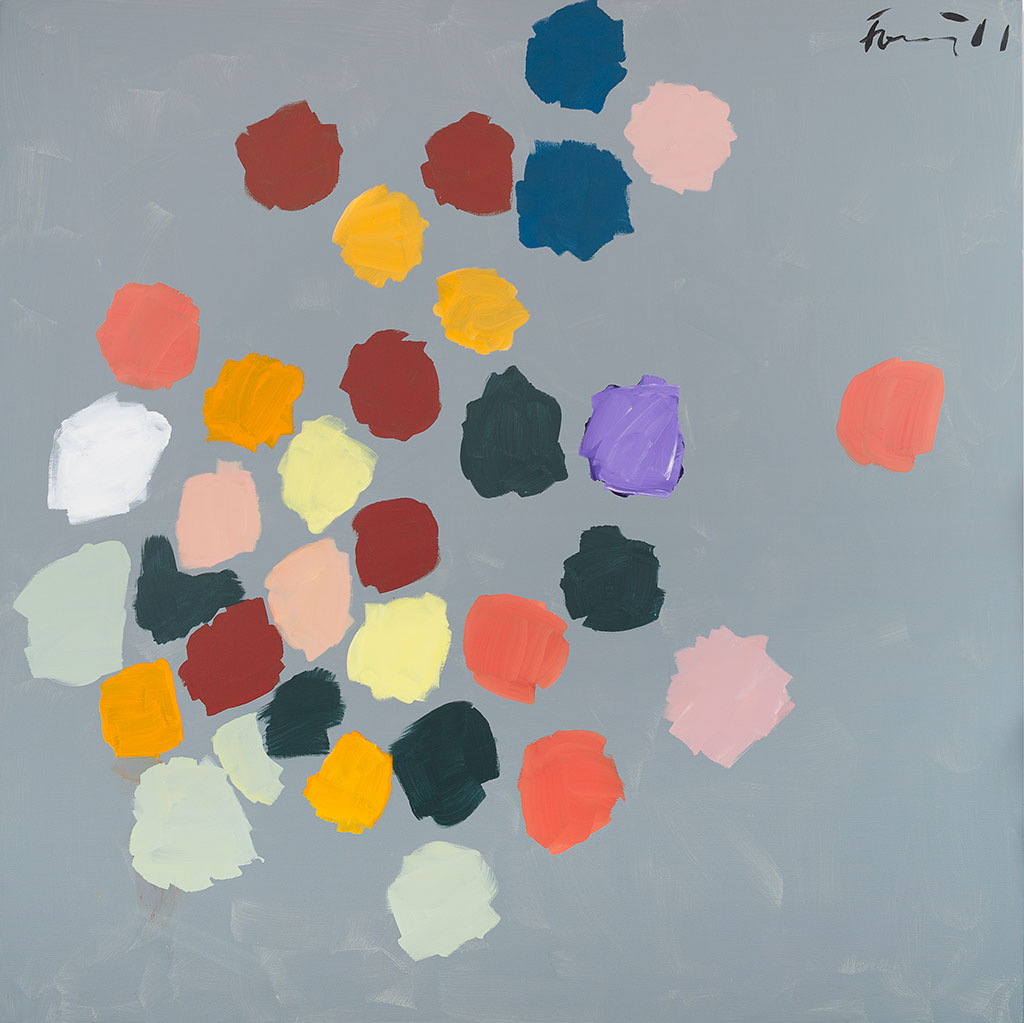ART CITIES:Copenhagen-Günther Förg
 Günther Förg was part of the post-war generation of German artists for whom modernism had become tainted with the horrors of Fascism. Förg’s artistic oeuvre encompasses from sculpted heads through abstract painting to architectural photography, much of Förg’s work displays a preoccupation with processes of fragmentation and visual or physical resistance.
Günther Förg was part of the post-war generation of German artists for whom modernism had become tainted with the horrors of Fascism. Förg’s artistic oeuvre encompasses from sculpted heads through abstract painting to architectural photography, much of Förg’s work displays a preoccupation with processes of fragmentation and visual or physical resistance.
By Dimitris Lempesis
Photo: Galerie Mikael Andersen Archive
Günther Förg was as equally influential on the 20th Century German art scene, he produced photographs and paintings, as well as wall paintings, sculptures, and reliefs. In the 1980s and ’90s Förg’s work was continually reinterpreted: initially considered a postmodernist, he was later seen as engaging with the legacy of expressionism. The exhibition “Günther Förg: works 1988-2007” at Galerie Mikael Andersen presents a broad selection of monotypes, drawings, watercolors, bronze sculptures and paintings. Taking inspiration from as disparate artists as Philip Guston, Blinky Palermo, Ernst Wilhelm Nay and Edvard Munch, Förg explored and challenged the pictorial practices of his predecessors and borrowed techniques, colors and expressions from some of the biggest names in modernism; always with a straightforward and uninhibited self-awareness that lends both humour and vivacity to his works.
Günther Förg studied at the Academy of Fine Arts in Munich (1973-79) with Karl Fred Dahmen, and was part of the post-war generation of German artists for whom modernism had become tainted with the horrors of Fascism. Förg’s artistic oeuvre encompasses from sculpted heads through abstract painting to architectural photography, much of Förg’s work displays a preoccupation with processes of fragmentation and visual or physical resistance exemplified by the grainy quality of his photographs and his assertive use of glass as a barrier that separates the viewer from the surface while projecting his image onto it. Between 1973 and 1976, Förg painted almost exclusively black monochrome canvas pictures in acrylic, which, with the addition of a translucent grey, produced a milky, veiled surface effect. After the death of his artistic colleague, Blinky Palermo, Förg pursued the latter’s European legacy of American Minimal Art from 1977, his paintings in Abstract styles recall Cy Twombly, Ellsworth Kelly and others. In 1980 he had his first solo exhibition at the Munich gallery Rüdiger Schöttle. Further exhibitions followed: In 1984 for example Günther Förg contributed to the Düsseldorf exhibition “von hier aus”. In 1992 his works could be seen at the Documenta IX. In the early 1980s, Förg made his “Alubilder”, assemblages of aluminium sheeting onto which the artist had painted linear patterns or portrait photographs. For his series of paintings on lead, dating from the ‘80s and ‘90s, he wrapped lead sheets over wood, then painted each surface with acrylic. Förg started using photography in his work at the beginning of the ‘80s. In the area of photography he is known for his works from 1980–06, primarily very large formats showing famous architectural sites. For this purpose he travelled extensively to Spain, Israel, Austria, Russia, France, Turkey and Italy where he primarily photographed Bauhaus buildings. Förg’s photographic research using a 35 mm camera and zoom lenses presents the uncompromisingly modern architecture in an unembellished way, sometimes dilapidated, often featuring careless renovations or additions. His photographs of buildings with cultural and political significance were taken from unusual, sharp-angled perspectives, with off-center framing and often in grainy focus, suggestive of painting. Many of the photographs are views taken through windows that draw attention to transitions from interior to exterior space. The photographs are presented under thick protective glass reflecting the room and the viewer. Beginning in 1992, paintings and works on paper, known and documented in literature as “Gitterbilder” appear in his work. The roots for these pieces, however, are to be found in an earlier series, the so-called “Fenster-Aquarelle” the crossbar forms a grid for the space in the image, which provides the frame for a whole flow of paintings without limiting their free display and development. In 1991 for the opening of Frankfurt’s Museum für Moderne Kunst, Förg produced a colorful wall piece for the central stairway, which together with a bronze relief formed a contrast to the architectural structure of the post-modern museum architecture. In 2000, he was commissioned with designs for Swiss Re’s Centre for Global Dialogue in Zurich. For this project Forg handled the color design for all of the interiors in the 1920s Villa Bodmer and installed two enormous tubes of raw metal in its central entrance hall. From 1992 until 1999, he taught at the Staatliche Hochschule für Gestaltung in Karlsruhe. From 1999 he was a professor in Munich. He died from cancer, on his birthday, 5/12/13, aged 61, at his home in Freiburg, Germany.
Photo: Left: Günther Förg, Untitled, 2001, Acrylic on canvas, 150 x 130 cm, Courtesy Galerie Mikael Andersen. Right: Untitled, 2007, Acrylic on canvas, 200 x 190 cm, Courtesy Galerie Mikael Andersen
Info: Curator Jens-Peter Brask, Galerie Mikael Andersen, Bredgade 63, Copenhag, Duration: 13/5-9/5/20, Days & Hours: Tue-Fri 12:00-18:00, Sat 11:00-15:00, http://mikaelandersen.com

